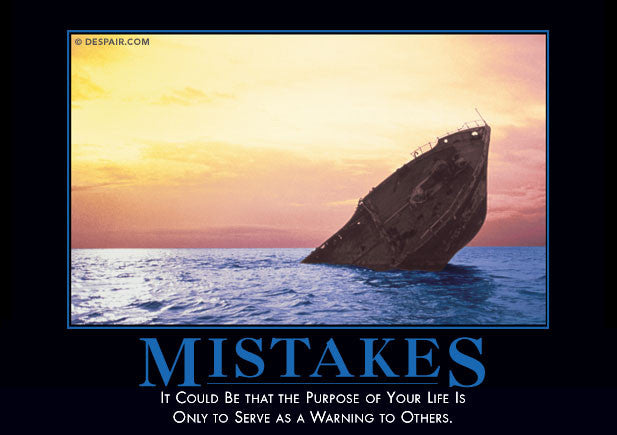Once again, I must address how the “Big 3” has pervaded the minds of trainees and been placed upon some sort of holy shrine, in doing so causing way more harm than good. It is for noble reasons that many lifters hold these movements in high regard and espouse these values, but unfortunately these reasons get lost in the telephone game that is training mythos.

"I know, it's the craziest thing, but I heard you need a lot of dip if you want to build a strong upper body."
What has happened: new trainees are told that, in no uncertain terms, they MUST perform the Big 3 in order to become bigger and stronger. These trainees then go and try out these 3 lifts, and typically find some sort of movement dysfunction hinders them from performing them with ease. Usually, this is the byproduct of a sedentary lifestyle that undervalued athletics (or only specialized in one sort) and overvalued sitting at a computer, wherein a beginner has zero mobility, flexibility, athleticism or body awareness, and as such simple movements become complicated, but I digress.
Upon meeting any sort of resistance in their attempt to employ any member of the Big 3, this trainee immediately flies to the internet to find a solution to their problem, and some miscreant always offers the same trite suggestion: use a variation. Having problem doing conventional deadlifts? Just pull sumo, you may be built for it. Low bar squat isn’t working? You probably have the leverages for high bar. Bench sucks? You probably just need a mega high arch, up on your toes, with the shortest ROM possible.
NOW we're getting stronger
Holy crap, did we forget WHY we were told to do these 3 movements in the first place? Wasn’t it because it was these 3 SPECIFIC movements that get us bigger and stronger? Why did we originally place so much value on the holy trinity before, but now, when our worship becomes trying and our faith is tested, we immediately abandon our one “true” God for false idols?
So I’m going to be a big man and admit my own wrongdoings. 1, the above metaphor was pretty insane, but 2, I am in fact NOT defending the Big 3 at all (as I have spent much time discussing the lack of need to perform them in training), simply the logic necessary behind training decisions. A movement is valuable insomuch as it meets our goals, not that it meets the criteria of being “the movement”. We must remember that our goal is to achieve our goal, not to simply use the “right” tools.
Nothing is more embarrassing than showing up to practice without your football bat
Every movement you perform in your training has a specific effect and impact on your results. Changes in angle, bar position, movement plane, starting position, foot spacing, etc etc, all CHANGE the results of the movement. In some cases, the changes are minor, and in others, they are drastic. This is why one cannot simply take solace in the fact that “deadlift” appears in the name of a movement when it comes to choosing a suitable deadlift to train. One must use the deadlift that actually MEETS their goals.
There is nothing magical about the Big 3. It is used to evaluate who is the best powerlifter at a powerlifting meet: that’s it. However, if you do believe that there is something magical about that Big 3, you need to use the actual movements necessary to achieve your goals. Going front squat, trap bar deadlift and Swiss bar bench is not the same thing. HOWEVER, if your goal is simply to get bigger and stronger, rather than having some laundry list of names and origins that your movements must possess before you consider them, it becomes necessary instead to analyze the movements themselves and determine if they will accomplish what is necessary in order for you to meet your goals.
You have no idea how unreasonably happy I get whenever I find an excuse to post this image
There is value in a ton of movements, and what works for you may not work for someone else, and vise versa. Instead of trying to make the square peg fit in the round hole, doing whatever it takes to make sure that your movement has “squat”, “bench” or “deadlift” in its name to ensure you are sticking with “the plan”, just use the movement that will actually meet your goal.












